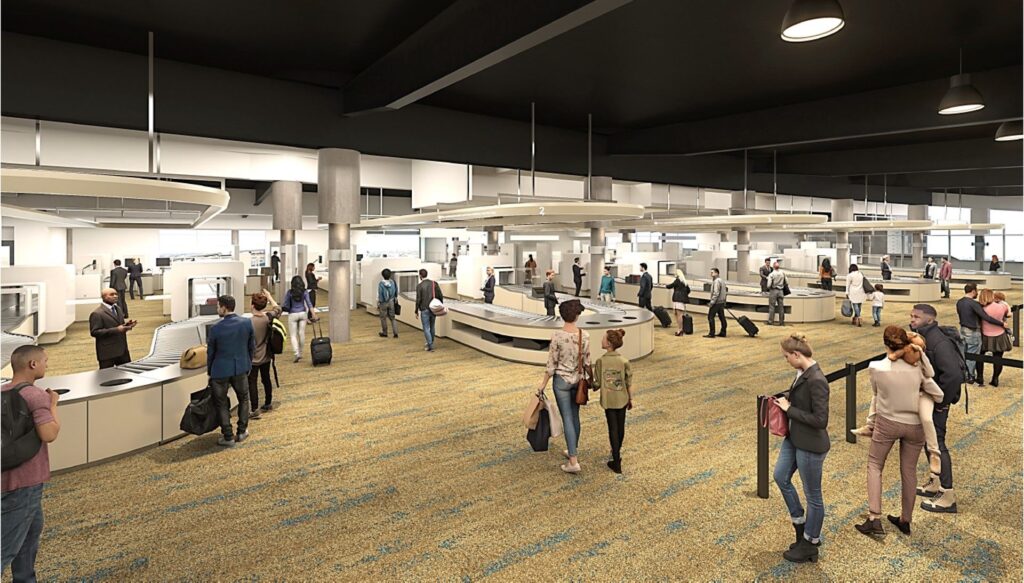Brisbane Airport is to begin work this week on the transformation of its domestic terminal, the first step in its wider A$5bn (US$5.3bn) Future BNE investment program that encompasses some 150 projects.
Alongside the upgrades to the domestic terminal, Future BNE will also include upgrades to the international terminal and the continued planning of the new Terminal 3 Precinct. Sparked by requirements to upgrade security screening equipment to meet Australian government standards by the end of 2025, Brisbane Airport Corporation will use this opportunity to install new computed tomography (CT) screening technology that will enable passengers to leave most items in their hand luggage including laptops and aerosols.
Brisbane Airport has awarded Rapiscan the contract for the security upgrade. To cater for the size and weight of the new screening equipment, a new mezzanine level will be constructed above the existing central terminal area. This will take place while still catering for up to 60,000 passengers every day. When finished, it will allow direct access from the Skywalk walkway, which connects parking lots to the terminal, straight into security screening for passengers who have already checked-in and only have carry-on bags.
Lendlease will manage this project, which will be staged to minimize the impact to passengers, airlines and retailers. Brisbane Airport is also installing a new baggage system in the domestic terminal. The current baggage system is made up of three separate systems that were originally installed in the 1980s. The new system will feature upgraded security, modern bag-tag readers and operate more sustainably by shutting segments of the system down when there are no bags to process.
Alstef and Brock Solutions have been awarded the contract to build the new baggage handling system. As part of Future BNE, the airport is investing in charging stations on the tarmac to support the electrification of airside vehicles, 70% of which will be electric by 2026.
For more on security, please click here.

